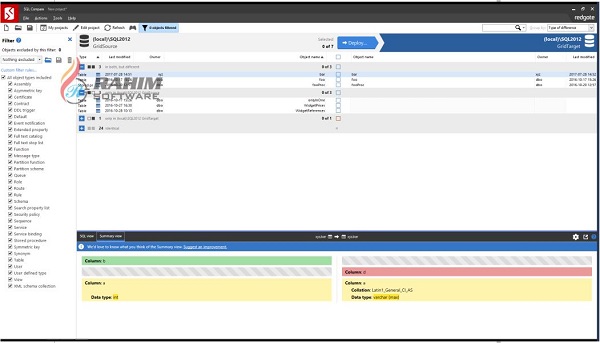


The structure of SQL statements are such that it seems like you keep writing the same things over and over again, substituting a few words here and there. For years I've been doing SQL development as part of my larger coding projects and every time I'd write a piece of SQL I'd think to myself, "ugh - this is so inefficient". So, in case you hadn't noticed, I think SQL Prompt is awesome. In this post, I'm going to give more of a high-level review/overview of all my favorite features without all the screenshots and captions, and (hopefully) follow this post up with a more in-depth post drilling down into the specifics at some point in the near future. It's not really an understatement to say that this tool has changed the way I do database development. The reason I didn't finish was not because I lost interest or became bored, but simply because there was so much I wanted to write about. SQL PromptĪ few weeks ago, I tried reviewing SQL Prompt and I never finished.

Along with its companion, SQL Compare, I can be sure that all my databases are exactly the same at any given time, from schema to data, all with a real nice user experience. Another tool that I use on a daily basis - so much so that it's actually become a part of my standard release process - is SQL Data Compare, which has been a wonderful help in keeping all of my databases synchronized. For that reason, this review will focus primary on SQL Prompt, which is the one thing I use on a daily (hourly!) basis, and has saved me untold amounts of time since I first installed it. Seriously, there is a LOT of stuff in there, and I just don't have that kind of time. I'm gonna follow that intro off with an admission of guilt: I haven't fully explored everything in the Toolbelt. If it has anything to do with working with databases, you can be sure that Red Gate has something that'll help you do it. The ability to instantly keep database structure in synchronization across development, test and production environments instantly reduced the amount of work and potential for error.I'm gonna start out this review with: "Wow, that's a LOT of stuff!" Red Gate's SQL Toolbelt package has a whole slew of tools that'll keep you happy for some time. This means you can avoid committing another user's changes, and more easily see who is working on what. For example, under a shared model, SQL Source Control displays information about which SQL Server user made which change. This allows SQL Source Control to better support your development model. When you link a database to source control, you must specify whether the database will be shared or dedicated.

Simply and easily bring all the benefits of working in a source controlled environment, familiar to you from working with application code, to SQL database development. For the first time, you can develop SQL databases in a source controlled environment without using resource-heavy change management scripts. In less than five minutes you can connect TeamForge Apache ™ Subversion ® repository to SQL Server and start developing your SQL databases in a source controlled environment. It links your databases to your existing source control system, so you can enjoy the benefits of source control without having to disrupt your workflow. Red Gate SQL Source Control makes database version control seamless. Database Development with the Same Rigor as


 0 kommentar(er)
0 kommentar(er)
